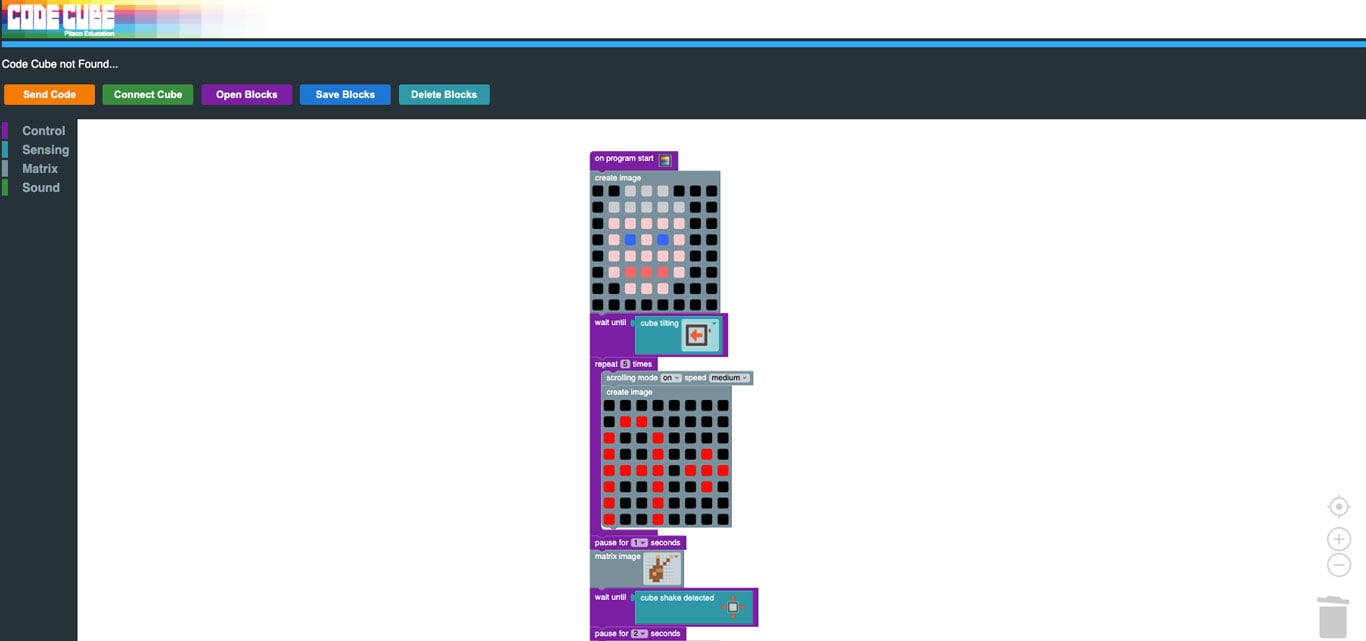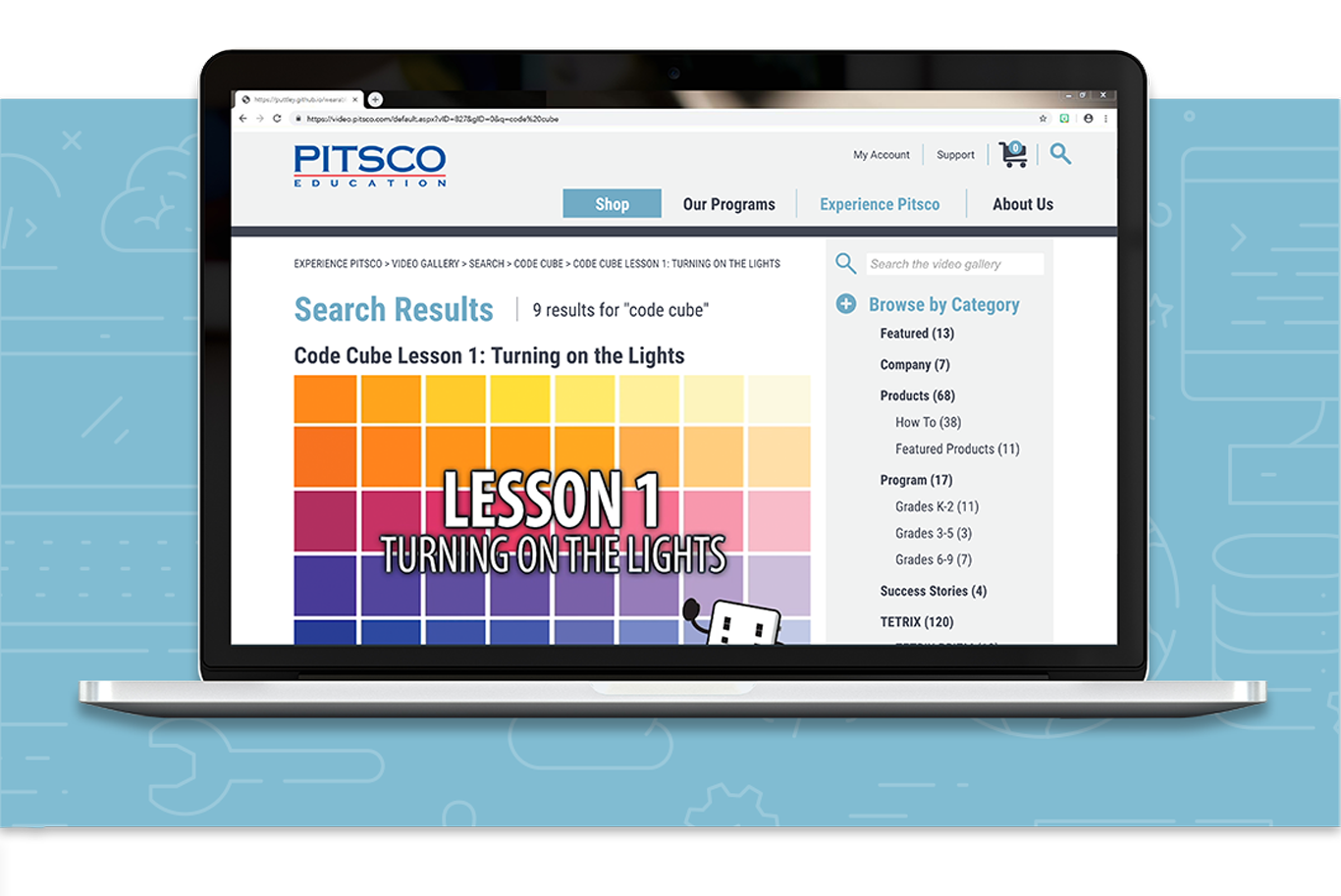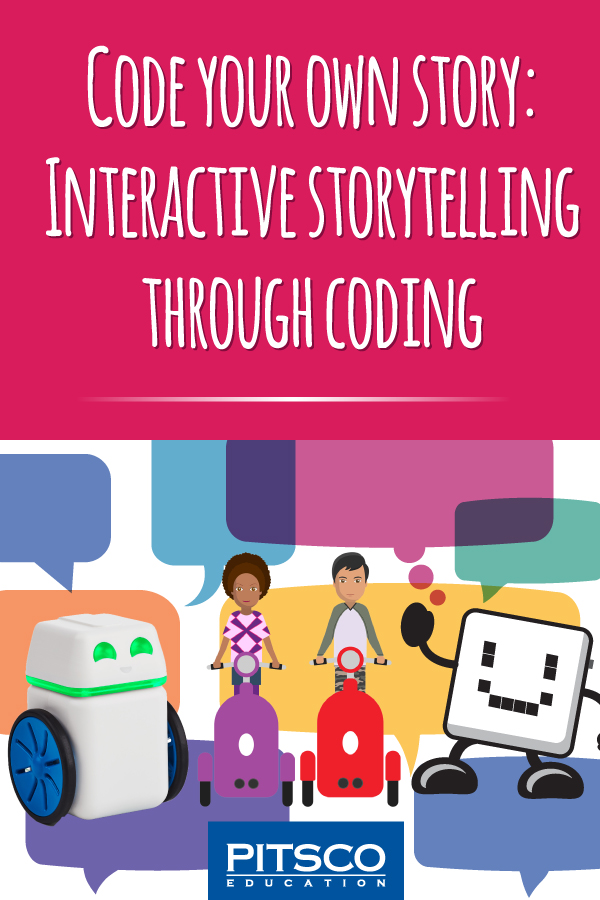Updated 06/10/24
The beginning, middle, and end – those are familiar elements of a good story. They provide the structure to help a reader follow along and convey the intended message.
Coding has similar elements that provide structure too. You might’ve heard of terms such as head, body, tag, and so on. These enable the code to be executed properly and even help the programmer explain the code if needed.
If you’re not a novice to coding – no worries. I’m not either, really. It might be easier to compare the stories and coding using an example. Let’s look at a basic HTML tag used to form a link:
Beginning: <a href=“URL of the link”>
Middle: The text the person sees to click on
End: </a>
So, the whole thing ends up looking like this:
<a href=“URL of the link”>The text the person sees to click on</a>
Individually, the parts mean nothing, but together, they complete a sequence of events that (with a click) can transport someone to a new place – just like a story.
Thanks to Pitsco staffer Matt McCaulley, a former programmer and now our video manager, for that example and analogy! Makes sense now, right?
Now, what if we actually combine the two? Yes, programming and storytelling together. It CAN happen and in just minutes! Students can develop capacities in both concurrently and have fun while doing so. And, with these two engaging elementary coding solutions, they’ll be authoring tales in no time!
KUBO Robot Travels, Explores, and Even Dresses Up for Educational Adventures
KUBO Robotics is a screen-free coding solution that has students piece together icon‐based tiles, called TagTiles®, to create instructions, or code, for their robot to roll over and execute. It’s screen free and super approachable. Learners as young as four can code! Though, just because it’s designed to be easy doesn’t mean it can’t create some serious code including functions, loops, and subroutines while also growing with students’ capabilities. There are advanced sets that extend learning through fifth grade with Coding+ and Coding++.
So, how can you tell a story with KUBO? Start by creating your free account at Portal.kubo.education to access these fun activities.
KUBO can become the main character for so many adventures. Keep in mind there is a Map Maker you can use to customize your own map. These examples can be found as downloads at Portal.kubo.education/activities:
- KUBO can become Indiana Jones or a great explorer and travel to Africa, Australia, or North America. You can even download a hat and backpack to take on the journey. Students will code the path through the country – whether that’s straight through or with a few turns along the way. Students can tell about KUBO’s travels, the geography, and the sites seen, the food enjoyed, and more.
- KUBO can become a superhero and navigate an obstacle course to save the day. Coming up with a name and designing a mask and cape will really bring the persona to life. Students create a path to navigate the obstacles and then tell others about their superhero and the obstacles encountered.
- KUBO is invited to a costume party and dresses up as a favorite storybook character. Students plan their route to the party and describe what the party they attended is like. They can also share why they picked the character they dressed as and why they like that story.
- KUBO can go on a monster hunt. Students code their hunt, detail the monsters, describe the environment or their route to find the monsters, and tell what the monsters are like. There are so many details to work out!
Students can come up with their own topics too, such as a robot dating show that this special education class dreamed up.
Beyond the fiction, students could also use KUBO to tell their friends about real-life events or retell past experiences. Or, they can even learn how to complete a task through a story-based depiction.
Wear and Share the Story Using Code Cube™
When we launched Code Cube™ and completed a company-wide training session, Pitsco User Acceptance Tester Larry Fink told us the fateful tale of Titanic USING A CODE CUBE!
We all knew the plot, the characters, and the ending and it was still engaging. Yes, with 64 pixels, he told a real-life story, even in an animated way.
Then, we were challenged to create our own stories. My partner and I told Pitsco’s story including creating our own co-founder Harvey Dean in pixels. Following is a screenshot of our coding workspace from Codecubeapp.Pitsco.com. The premise was, “This is Harvey, who, as a student, needed to learn differently and with his hands. He became a technical education teacher who had difficulty getting the supplies he needed and wanted to provide great experiences for his students. So, he and two fellow educators set out to give better options and experiences to teachers. Because of Harvey and his commitment to giving the best to teachers and students, we send innovative products that provide engaging experiences around the world.” (Delivering items in a quality manner and supporting with superior customer service are hallmarks here and paramount in what we do.)
The premise was, “This is Harvey, who, as a student, needed to learn differently and with his hands. He became a technical education teacher who had difficulty getting the supplies he needed and wanted to provide great experiences for his students. So, he and two fellow educators set out to give better options and experiences to teachers. Because of Harvey and his commitment to giving the best to teachers and students, we send innovative products that provide engaging experiences around the world.” (Delivering items in a quality manner and supporting with superior customer service are hallmarks here and paramount in what we do.)
It took just a bit of time, and we were all sharing our stories. We had groups create a dunking basketball, superhero cats, growing flowers, and more. Everyone had a different take and different way of animating and bringing their stories to life.
That’s the beauty of Code Cube. It empowers students to be content creators through code. It’s not about the consumption of information but about generating their own understanding and then wearing it, sharing it, and revising it. Code Cube crosses curriculum boundaries. It’s programming, art, SEL, communication, and more. Both coding and art encourage students to express themselves creatively and also provide a safe medium to take risks and occasionally fail.
We have a series of tutorials and challenges available and in the teacher’s guide. The guide walks you through 10 lessons and 12 challenge activities. The ELA activity for our tenth lesson, A Little Extra!, has students practice creating an intro to their story. And, in particular, the bonus activities – the Challenge Activities – each have great ideas for having students create stories. The easy related favorites are:
- Treasure Map – Have you ever dreamed of finding a buried treasure after finding a map? Here’s a chance for you to make that dream come true for someone who shares it! Hide an object somewhere in your class or on your campus (ask your teacher where it is OK to go). Then, write a program that will lead someone from a starting point to your hidden treasure if he or she follows the steps correctly. You can add some fun riddles along the way to give clues to the location or hints about how big or small the steps should be. Feel free to add any sounds you think would improve the presentation. Use a worksheet to sketch ideas and write descriptions of your program if needed.
- A Great Story – It seems like everyone loves a great story! All great stories have a character that wants something and takes action to make it happen. However, the character will run into some sort of obstacle or conflict that he or she will have to resolve. Write a great, very short story and then write a program that will show images or animations to help tell the story. Feel free to add any sounds you think would improve the presentation. Use a worksheet to sketch ideas and write descriptions of your program if needed.
- Holiday Stories – Do you like to hear stories about different holiday seasons? Your Code Cube can be used to help tell a real or fictional story related to a holiday season. Create at least three different images that can be used to help tell an original or existing story related to a holiday. Use a worksheet to sketch ideas and write descriptions of your images or how they relate to your story if needed.

Continue the Coding Journey
KUBO and Code Cube are only the first characters in a few chapters of the many your students can author in their coding and STEM education. Check out our other coding offerings that can build on what your students learn coding their stories.
MORE RESOURCES:
- Teach the real-world relevance of coding with LUMA
- Wearable Tech: Teach coding at the Elementary level using Code Cube™
- Once upon a STEM story – Building STEM skills with fairy tales

TOPICS: IN THE CLASSROOM, Middle School, Elementary School, BEYOND THE CLASSROOM, IDEAS & INSPIRATION, ROBOTICS, Teacher Resources, Technology, STEM, Resources, Coding, Activities, 21st Century Skills, Hands-on Learning, STEAM



